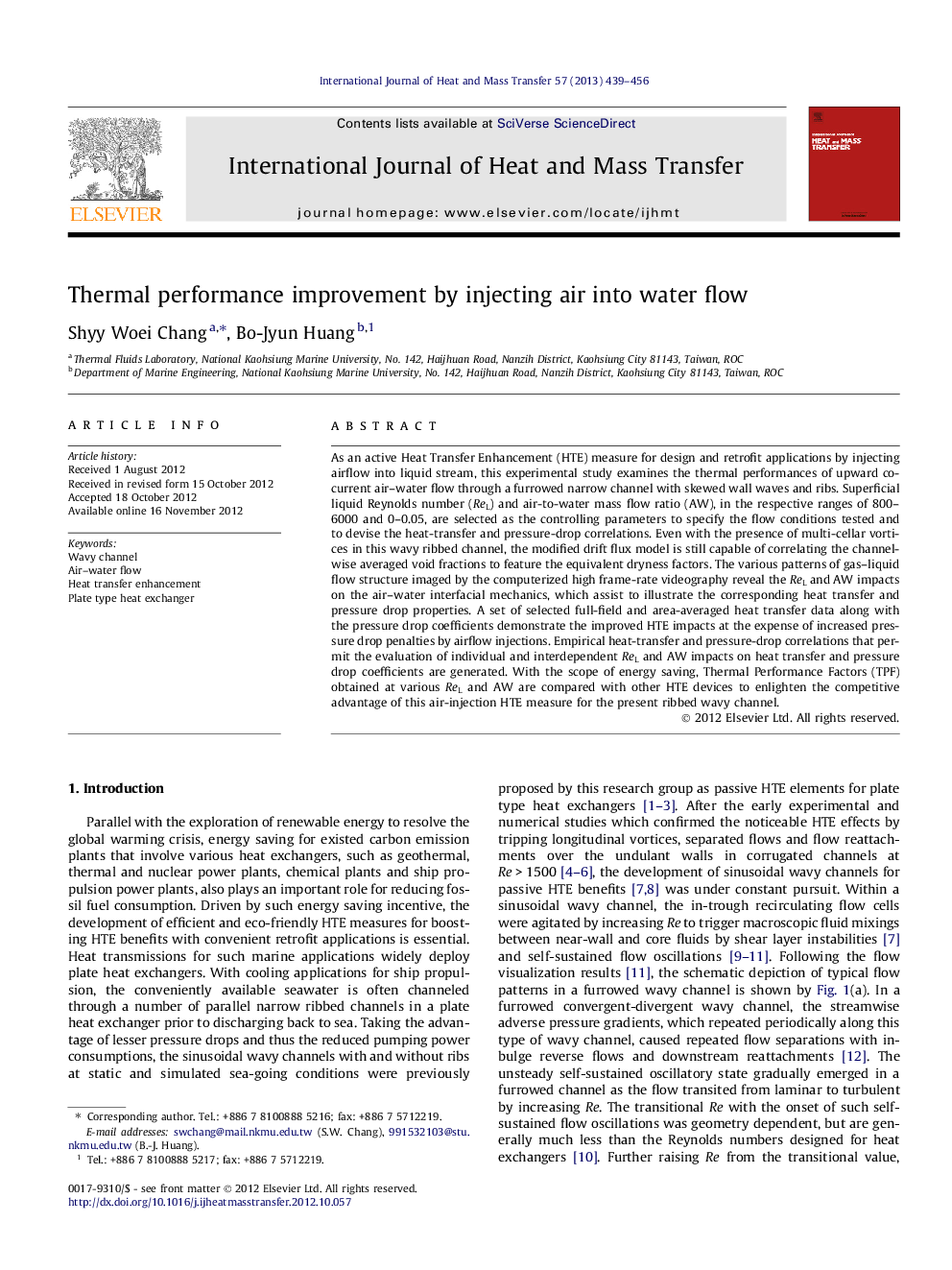| Article ID | Journal | Published Year | Pages | File Type |
|---|---|---|---|---|
| 7058975 | International Journal of Heat and Mass Transfer | 2013 | 18 Pages |
Abstract
As an active Heat Transfer Enhancement (HTE) measure for design and retrofit applications by injecting airflow into liquid stream, this experimental study examines the thermal performances of upward co-current air-water flow through a furrowed narrow channel with skewed wall waves and ribs. Superficial liquid Reynolds number (ReL) and air-to-water mass flow ratio (AW), in the respective ranges of 800-6000 and 0-0.05, are selected as the controlling parameters to specify the flow conditions tested and to devise the heat-transfer and pressure-drop correlations. Even with the presence of multi-cellar vortices in this wavy ribbed channel, the modified drift flux model is still capable of correlating the channel-wise averaged void fractions to feature the equivalent dryness factors. The various patterns of gas-liquid flow structure imaged by the computerized high frame-rate videography reveal the ReL and AW impacts on the air-water interfacial mechanics, which assist to illustrate the corresponding heat transfer and pressure drop properties. A set of selected full-field and area-averaged heat transfer data along with the pressure drop coefficients demonstrate the improved HTE impacts at the expense of increased pressure drop penalties by airflow injections. Empirical heat-transfer and pressure-drop correlations that permit the evaluation of individual and interdependent ReL and AW impacts on heat transfer and pressure drop coefficients are generated. With the scope of energy saving, Thermal Performance Factors (TPF) obtained at various ReL and AW are compared with other HTE devices to enlighten the competitive advantage of this air-injection HTE measure for the present ribbed wavy channel.
Related Topics
Physical Sciences and Engineering
Chemical Engineering
Fluid Flow and Transfer Processes
Authors
Shyy Woei Chang, Bo-Jyun Huang,
